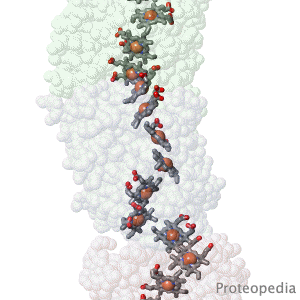Proteopedia:Featured JRN/3
 |
Geobacter nanowire structure surprise.
F Wang, Y Gu, JP O'Brien, SM Yi, SE Yalcin, V Srikanth, C Shen, D Vu, NL Ing, AI Hochbaum, EH Egelman, NS Malvankar. Cell 2019 doi: 10.1016/j.cell.2019.03.029 >>> [this I3DC complement] >>> |